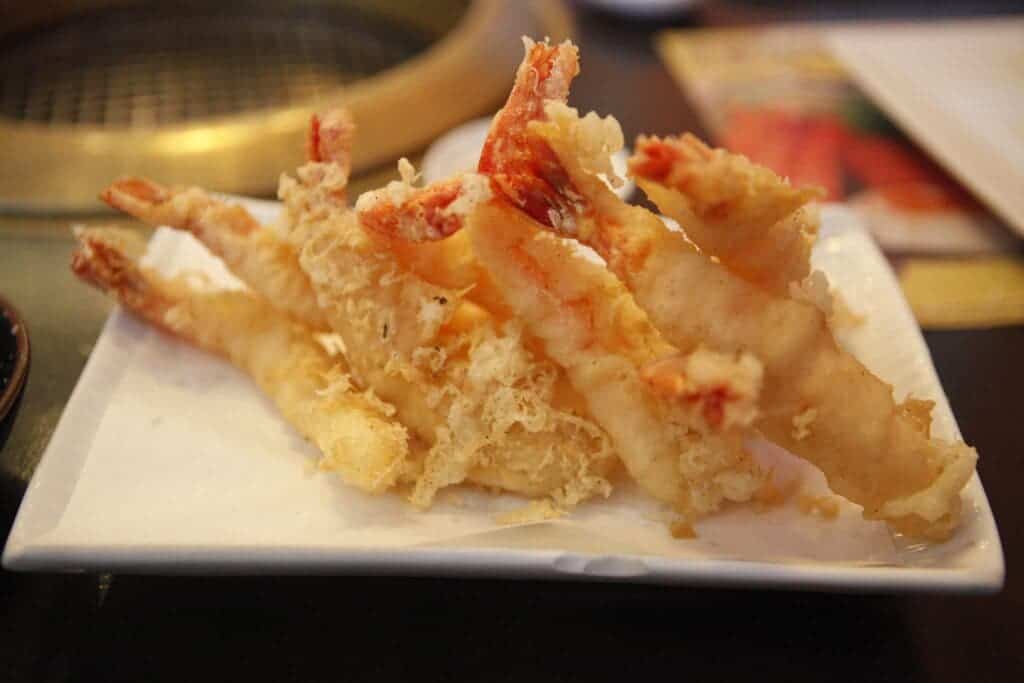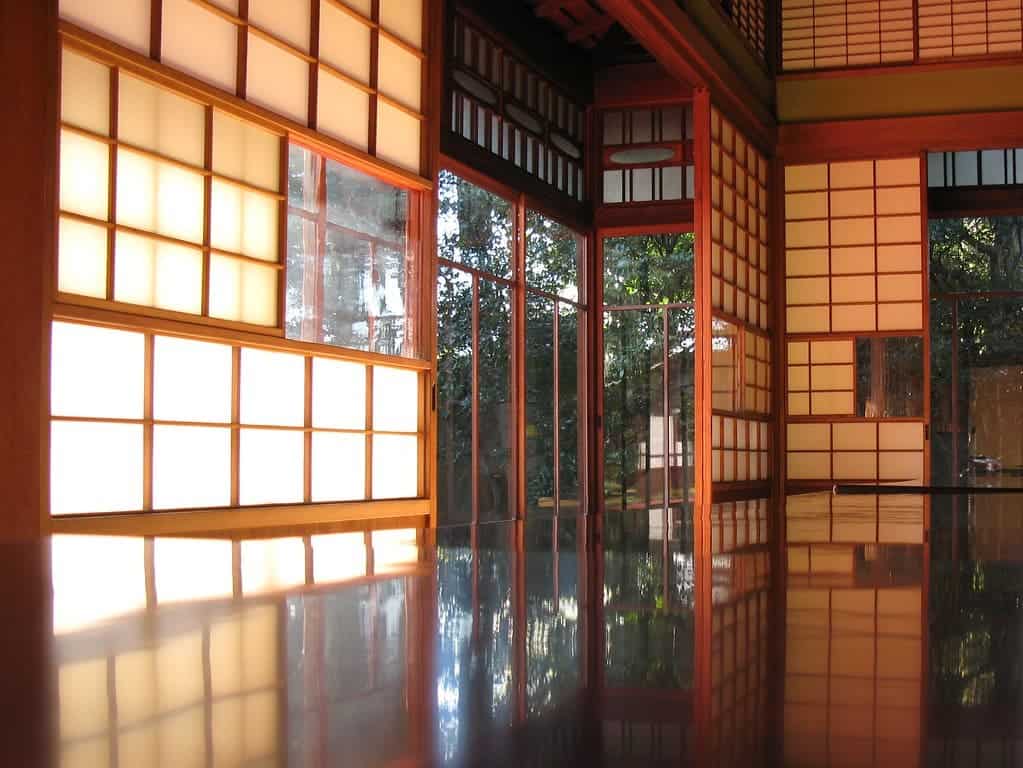Tempura batter is a Japanese take on the age-old art of deep-frying. But their approach creates the unique textures and flavors tempura imparts to any dish.

Cultural exchange is always exciting, but never more so than when it involves food. You might know that the Italian pasta tradition started when Marco Polo… borrowed the idea of noodles during his adventures in Asia. In the spirit of fairness, Japanese cooks on the island of Nagasaki would also create a new culinary tradition starting from European customs. A technique that Portuguese missionaries used to cope with fasting or abstinence days thus served as the cornerstone of tempura.
What is tempura?
The term itself refers to a type of cooking where different food items are lightly dipped in batter and deep-fried. But it can also be used to refer to the batter itself, and that’s what we’ll be doing going forward.
Not very different in composition from other deep-fry batters in use around the world, tempura is a mixture of water, flour, and sometimes egg. Although simple in terms of ingredients, chefs will take great care to observe proper preparation steps. Their choices and approach have a great deal of effect on the finished item.
The most important steps to making tempura instead of regular ol’ batter is to keep everything at a low temperature, in small batches, and keep mixing to a minimum. Tempura batter is made with iced water or mixed in a bowl placed inside a larger container holding ice. Mixing is done in small batches in order to allow for better quality control, and is typically performed quite quickly with chopsticks. It’s not uncommon to see some sparkling water being thrown in the mix, too. Baking soda, oil, spices, or starch may also be used.
This set of conditions helps create the distinctive texture and hardness of fried tempura. Because it’s held at such a low temperature and mixed for a few seconds at most, it develops a fluffy, crunchy feel after being fried. The short mixing period also allows for clumps to form in the batter, which helps give its texture more variety and even more crunch. Furthermore, it prevents gluten networks from forming in the batter, giving it its glass-like properties.
Apart from appearing a bit smoother in texture, tempura doesn’t look all that different from other batters after being fried. But where your chicken wings, for example, would be coated in a soft layer with some crunchy bits, one fried in tempura would come out in a very hard, brittle shell. You can even tap on it and it would make a hollow noise like a gourd.
Can I make tempura?
Definitely. Tempura can be made from the comfort of your own home, where nobody can see you burn the batter. That is, of course, if you’re not somehow reading this from Japan during the Edo period — then it would be illegal for you to fry tempura at home.

Any type of soft wheat flour can be used; cake flour works fine, as does pastry or all-purpose flour. It doesn’t have to be gluten-free, but low-gluten varieties of flour can help make the process a bit more beginner-friendly. Still, when cooking anything that has a short list of ingredients, what you do to them is extremely important for the end result. So don’t expect to be perfect at it on your first try.
Once the batter is ready, however, you can start having fun with it. There’s that old, tongue-in-cheek folk wisdom that everything is tasty when deep-fried, and it holds true here. You can use tempura on pretty much everything from vegetables or greens to fish, meat, dairy, even whole steaks. You can even use it on ice cream. Just keep in mind that the tempura will cook relatively quickly, so if you’re planning on coating something like a steak, make sure it’s cooked beforehand.
How did we get tempura?
The very short story is that 1543 marked the first contact between Japan and Europe, as some Portuguese sailors washed ashore the island. Five years later, the first missionary (Francisco Xavier, a Jesuit) came to the island to spread their religion, in classic European fashion. Things went pretty well at first, with everyone making a lot of money out of mutual trade, but the Portuguese in particular.
Japan had so far been a relatively isolated culture, owing to its geographical seclusion. Most of their foreign affairs at this point included invading, being invaded by, or limiting trade with other groups in East and Southeast Asia. Europeans were already present in the area by 1543, establishing bases mostly in India to cement the spice trade, but there had not been any direct contact between the two groups up to that point.
Needless to say, these two cultures — Japan and Portugal — were quite fascinated by the strange, exotic other, by their language, dress, and the items they had to trade. The Japanese were also taken aback by the ships Portuguese, which were more sophisticated than those available in Japan. But their guns were most impressive of all. In fact, the first three Portuguese traders to ever reach the island (António Mota, Francisco Zeimoto, and António Peixoto) were arguably allowed access into isolationist Japan because they showed off their muskets the minute they got there. Everyone wants to buy muskets, but Japan in particular wanted loads of muskets, as they had been fighting a civil war for almost 100 years by that point.
Portugal was also very interested in the exotic goods Japan had to offer, including silver. But they were especially interested in the Japanese themselves — more to the point, they were interested in buying people from Japan to be sold as slaves throughout Europe. Young women were the most sought-after, for all the wrong reasons. These people were likely the first Japanese individuals to reach Europe, as slaves, exotic concubines, and worse.
Still, despite the nastier parts of history, there was an understandable mutual interest between these two cultures to understand one another. Japan would have the most opportunity to do so as Portuguese (and later, Dutch) missionaries would live on the archipelago and try to convert the natives to Christianity. In the process, they were also given Christian names and encouraged to take up the traditions, customs, and lifestyle. This would eventually cause friction between the natives and these “southern barbarians”, leading to the Tokugawa Shogunate banning Christianity in 1614 and trying to expel all missionaries and execute all local converts in the next few decades.
Westerners (both Europeans and Americans) would eventually return with a lot of guns and big ships, explaining that Japan had none. It was a pretty compelling argument and this forced the island nation to open up to international trade (at, probably, very poor rates).
At some time between the missionaries getting to the island and their expulsion, it’s probable that the Japanese saw these Europeans create batter to deep-fry food during fasting days. We don’t know for sure but we’re pretty confident that the word “tempura” comes from the Latin term “temporo”, meaning “time of” or “time period”. The Portuguese and Spanish Catholics at the time still referred to Ember days by their Latin name, “quator tempora”. It’s possible that the process of dipping food in batter and frying it was thus wholesale ‘imported’ from the missionaries along with the words they used to describe why they were doing it.






